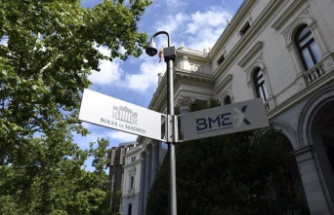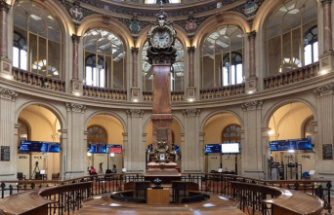A federal prosecutor Tuesday told jurors they won't hear evidence of a formal meeting, written contract or verbal agreement between the defendants on trial, charged with conspiring to impede federal employees from carrying out their work at the Malheur National Wildlife Refuge.
Instead, they'll be able to infer through the words and actions of defendants Jason Patrick, Duane Ehmer, Jake Ryan and Darryl Thorn, that they used the federal property as their own last winter as a "platform for their cause,'' essentially keeping staff from the U.S. Fish and Wildlife Service or Bureau of Land Management from coming to work.
They raided the refuge headquarters on Jan. 2, 2016, going building to building while armed, and turned the refuge offices and bunkhouse into their own living quarters and meeting space, while keeping armed watch at the property's front gates and fire tower to control access to and from the site, Assistant U.S. Attorney Geoffrey Barrow said.
"Circumstantial evidence will show there was a meeting of the minds to keep employees from doing their jobs,'' Barrow told 12 jurors and four alternates during opening statements in the second Oregon standoff trial.
In its opening statement, the government sought to directly address the effective defense arguments from the first trial last fall that played a role in the acquittals of refuge occupation leaders Ammon Bundy, his brother Ryan Bundy and five co-defendants on the same conspiracy and weapons charges. In the first trial, one of the jurors told The Oregonian/OregonLive that the government failed to prove that the agreement of a conspiracy had occurred.
This trial, for example, retired FBI Special Agent Greg Bretzing, who headed the law enforcement response to the 41-day refuge occupation, will be called as a witness, and address why FBI agents or local law enforcement didn't move in right away to clear the refuge of the armed occupiers. In the first trial, defense lawyers repeatedly pointed out that the refuge occupiers were free to travel to and from the federal wildlife sanctuary for weeks, to shop in Burns or visit their families out of state, without any police or federal agent questioning them.
Bretzing will testify that his paramount goal was "preservation of human life,'' Barrow said.
Patrick's standby lawyer Andrew Kohlmetz countered Tuesday that jurors must pay primary intention to the beliefs that inspired the defendants to travel to Oregon's Harney County in either late 2015 or early 2016.
Each showed up for their own reasons, and there was no organized conspiracy, but a spontaneous gathering of like-minded people, he argued.
"The evidence will fail to show that a single person went out there with the conscious desire to interfere with anyone that worked there,'' Kohlmetz told jurors.
Patrick, a roofer who lost his business during the recession, was struck by social media posts of Ammon Bundy, regarding the plight of Harney County ranchers Dwight Hammond Jr. and Steve Hammond, who were set to return to federal prison on Jan. 4, 2016 to serve out a five-year federal sentence for setting fire to public lands. He felt the re-sentencing of the Hammonds was unjust and came to Burns to participate in a protest, Kohlmetz said.
"You will see into their minds,'' Kohlmetz told jurors. "The intent of these individuals was very publicly broadcast.
Ryan, an aspiring actor, Thorn, a welder, and Ehmer, a handyman, and Patrick, a roofer, didn't know of one another when they arrived in the Burns area last winter, Kohlmetz said. However, they shared a belief in their right to peacefully assemble and petition the government for redress of their grievances, and a belief that the federal government had abandoned rural America, he said.
Patrick, 43, of Bonaire, Georgia;.Ehmer, 46, of Irrigon, Oregon; Ryan, 28, of Plains, Montana; and Thorn, 32, of Marysville, Washington, have pleaded not guilty to conspiring to impede employees from the U.S. Fish and Wildlife Service or Bureau of Land Management from carrying out their work at the Malheur National Wildlife Refuge last winter.
Three also have pleaded not guilty to possessing a firearm in a federal facility, and two contend they didn't willfully damage government property when they used a refuge excavator to dig two trenches on the site, as prosecutors contend.
The opening statements of three other co-defendants will be given Tuesday afternoon. Their lawyers will argue that they traveled to Oregon for disparate reasons as well.
Ehmer arrived, for example, to check out for himself what was going on at the refuge, then left to retrieve some tools at home before returning to do repair work at the refuge headquarters, he and his lawyer contend.
Ryan, his lawyer has written in legal motions, had seen Bundy's videotaped call for support and went to the refuge to find out what Bundy and others were teaching about the U.S. Constitution. He claims he went to the refuge to protest government land use policies, and the government's treatment of two Harney County ranchers, Dwight Hammond Jr. and Steven Hammond, who had to return to federal prison to serve out a five-year sentence for setting fire to public land.
Ryan's lawyer Jesse Merrithew is expected to share with jurors a little about Ryan's life in the rural community of Plains, Montana, how he has seen his community impacted by federal policies, his involvement in community theater productions, and how his family situation aligns with that of the Hammonds and the Bundys, according to court records. Ryan's parents, Dan and Roxsanna Ryan, are expected to be called as witnesses for his defense.
Of the four, Patrick and Ehmer were more visible and outspoken during the occupation.
Barrow called Patrick one of the organizers.
Our editors found this article on this site using Google and regenerated it for our readers.













